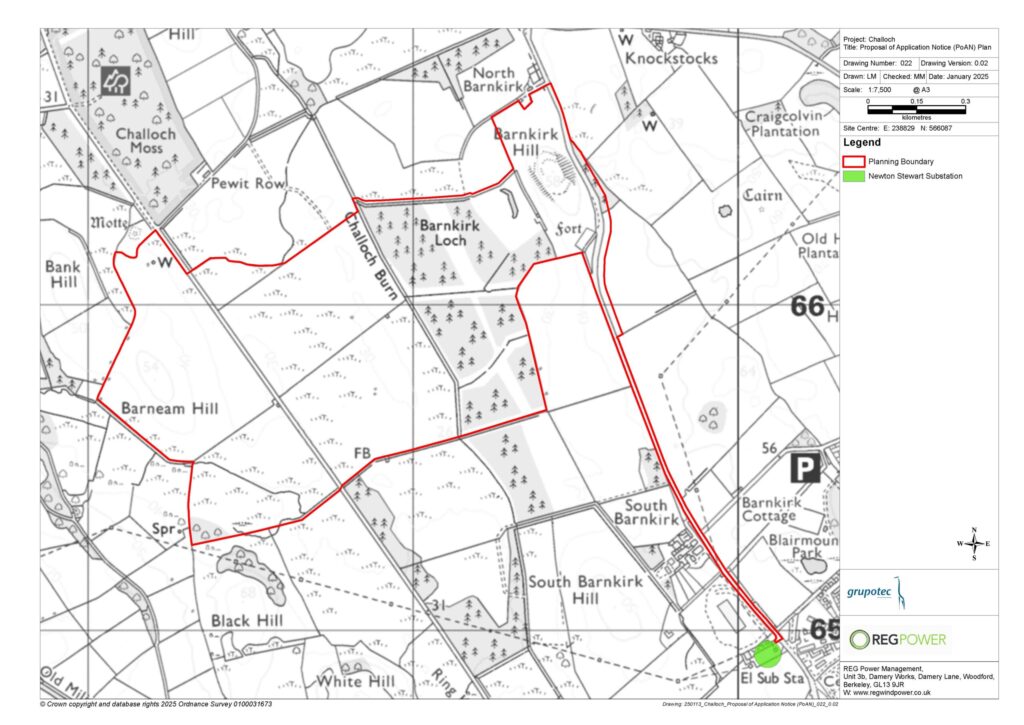BLAIR HILL WIND FARM Objection Submitted
Hands Off Our Hills Submits 154-Page Objection to Blair Hill Wind Farm
At 11:30am today 30th April 2025, Hands Off Our Hills (HOOH) formally submitted a comprehensive 154-page objection to the proposed Blair Hill Wind Farm (ECU00004878), a development by Renewable Energy Systems (RES) Ltd. The proposal seeks to erect 14 industrial-scale turbines, with the tallest reaching 250 metres, just 2.7km north of Newton Stewart in Dumfries and Galloway.
Our objection—which we affectionately call “a night’s reading”—is the culmination of months of rigorous investigation, community engagement, and technical review. It addresses every aspect of the developer’s Environmental Impact Assessment Report (EIAR), including, but not limited to:
- Tourism and Recreation
- Health and Wellbeing
- Wildlife and Protected Habitats
- Peatland Disturbance and Environmental Impact
- Visual Intrusion, Cultural Heritage, and Noise
- Transport, Aviation, and Grid Viability
CS-137 – Caesium 137 – Chernobyl – Galloway Hills – PEAT
One of the most concerning findings detailed in our report is the serious public health risk linked to the release of radioactive Caesium-137 (Cs-137). Blair Hill’s peatlands still hold legacy contamination from the Chernobyl disaster 39 years ago. Cs-137 has a half-life of 30 years and remains a threat today. If more than 30cm of peat is excavated, this radioactive material may re-enter our air, water systems, and food chains, a risk that has not been addressed by RES, in fact Scoped Out.
We believe this is a clear and present danger to the environment and public health, especially given that the Galloway Hills received elevated fallout levels due to rainfall patterns during the Chernobyl event. A map of the fallout can be viewed below:

Hands Off Our Hills is now actively collaborating with specialists and stakeholders to ensure that any risk of Cs-137 mobilisation is properly investigated, regulated, and ‘if necessary’ halted entirely. We are calling for a moratorium on all peat excavation at this site until a full independent radiological assessment is conducted.
This objection is more than just a technical document, it is a passionate defence of our home, our heritage, and our hills.
🙏 A Huge Thank You
We want to extend our heartfelt thanks to the entire HOOH team, especially the volunteers who worked late nights, pored over maps, policies, and environmental data, and helped draft the detailed chapters within our submission. We also thank the public, walkers, residents, and businesses who have supported us throughout. This is your fight too—and today, your voice was heard.
To read the full objection InCLUDING THE CS-137 REPORT, visit:
🌐 https://handsoffourhills.co.uk/objections/HOOH-Objection-ECU0004878-Blair-Hill.pdf
📩 Contact: contact@handsoffourhills.co.uk
📄 Ref: ECU00004878 – Blair Hill Wind Farm Objection
There is still 2 days to submit your objection to Blair Hill Wind Farm, if you haven’t already done so, please visit:
🌐 https://blairhill.objectnow.co.uk
It takes less time than to boil a kettle, and will go a long way to showing Dumfries and Galloway Council and the Energy Consents Unit, that they can keep their “Hands Off Our Hills”.









